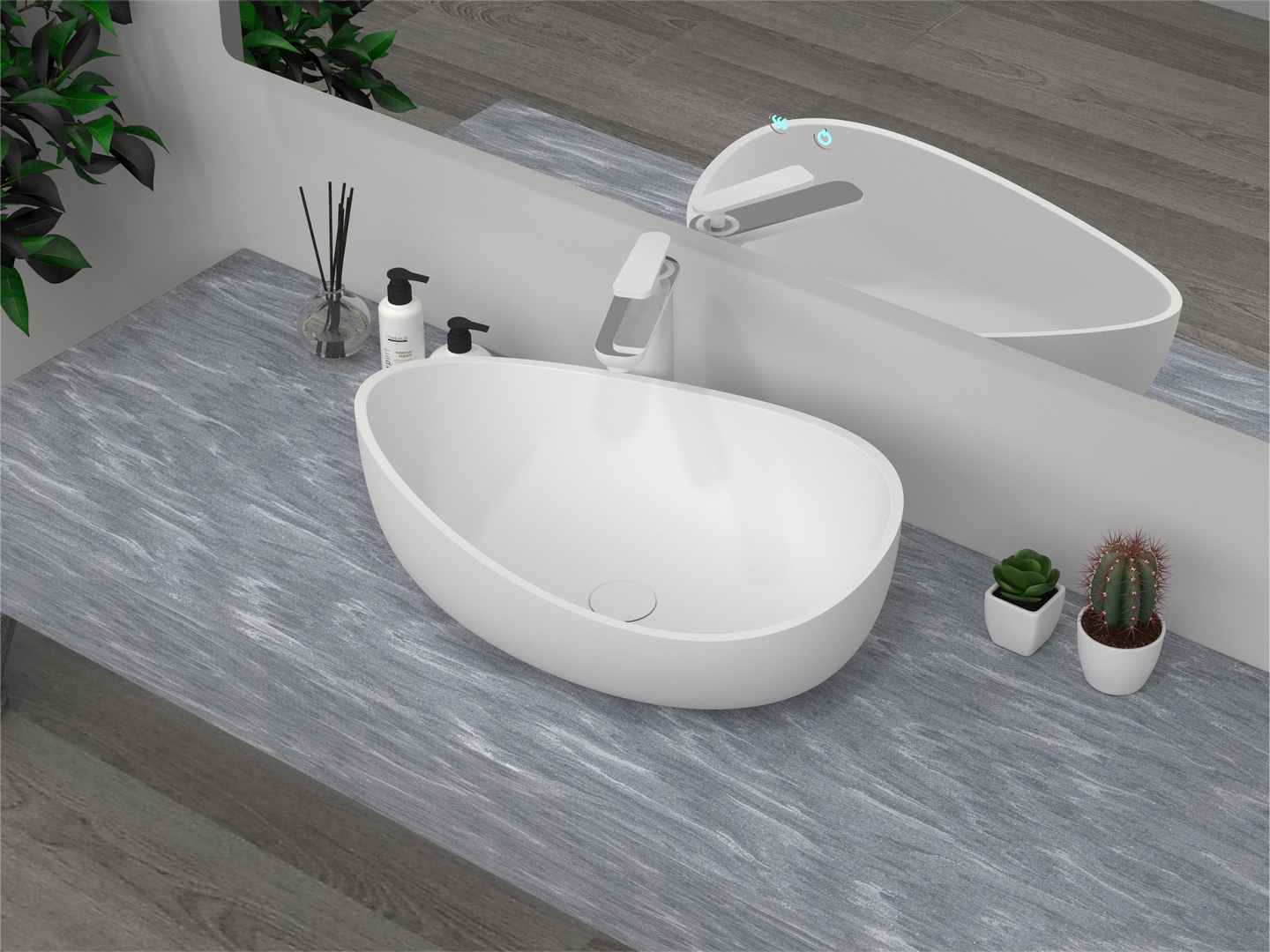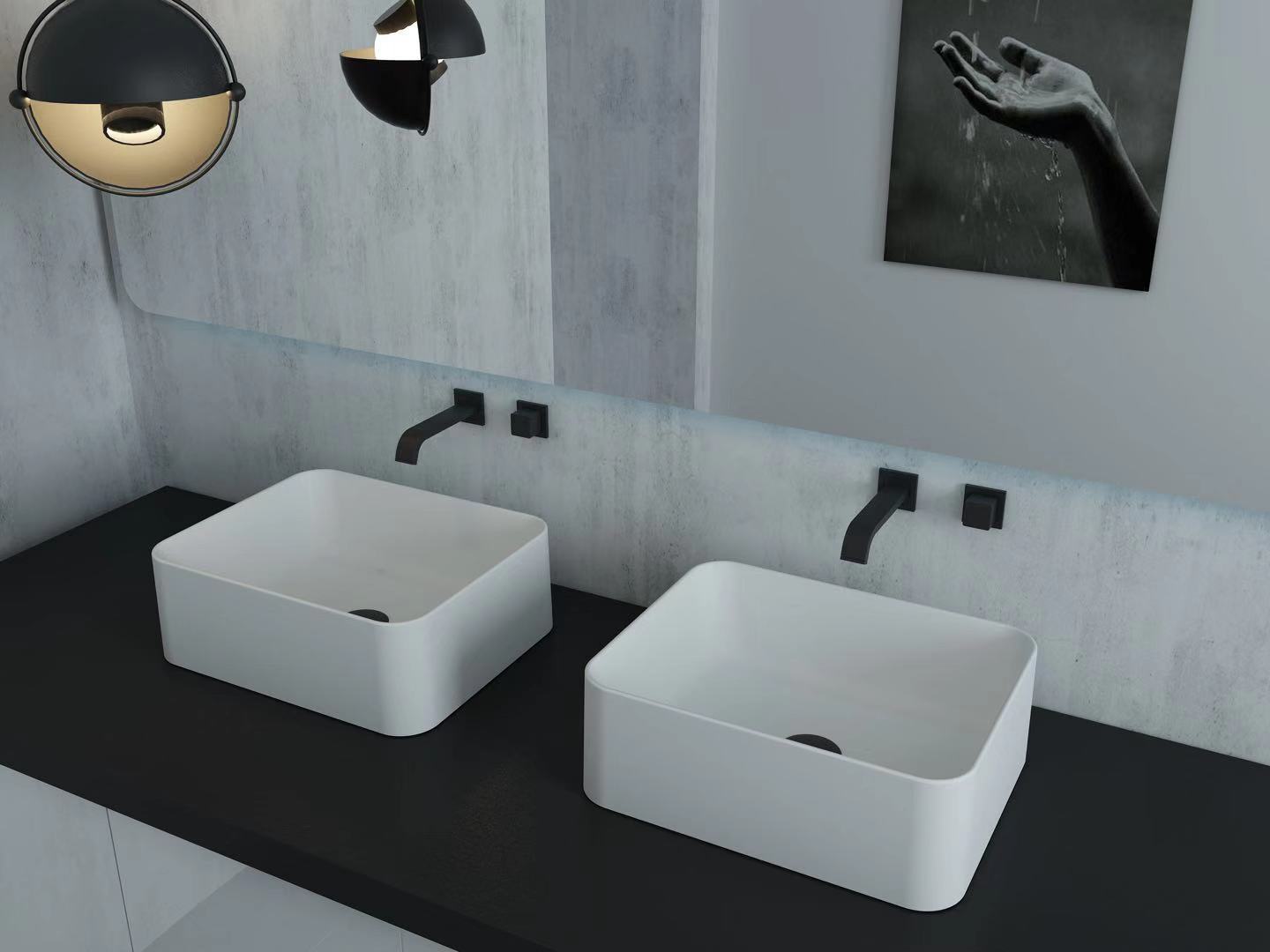5 messages of bathroom toilet basin manufacturers
Introduction
Agreeing on the significance of an informed choice in bathroom fixtures, this article delves into the realm of bathroom toilet basin manufacturers.
For those seeking comprehensive insights, we promise to unravel crucial details guiding your decisions.
We'll explore the focal points that bathroom basin in vanity unit manufacturers emphasize, helping you understand the nuanced selection process.
By navigating through this guide, you can not only pinpoint the type of information these manufacturers prioritize but also gain the expertise to choose the right toilet basin design in bathroom.
This essay ensures that your quest for the perfect bathroom fixture aligns seamlessly with the wealth of information provided by reputable manufacturers.
Let's embark on a journey of discovery, where understanding the essentials becomes the key to finding the ideal toilet basin.

1) Which Type of Wash Basin is Best for the Bathroom
Pedestal Basin: |
|
Pros: | Embracing a classic and elegant design, the pedestal basin conceals plumbing for a tidy appearance, making it ideal for small bathrooms. |
Cons: | Its charm comes with limited storage space. |
|
|
Wall-Mounted Basin: |
|
Pros: | Exhibiting modern style, this basin is easy to clean beneath and offers adjustable height. |
Cons: | Storage is constrained, requiring sturdy wall support. |
|
|
Countertop or Vessel Basins: |
|
Pros: | Infusing style and modernity, these basins come in various shapes and materials, suitable for existing countertops. |
Cons: | Require a stable and spacious countertop, with potential for additional cleaning around the bowl. |
|
|
Undercounter Basins: |
|
Pros: | Featuring easy maintenance and a stylish appearance, these basins complement solid surface countertops. |
Cons: | Installation complexity may necessitate professional assistance. |
|
|
Semi-Recessed Basins: |
|
Pros: | Harmonizing countertop and recessed basin features, these basins create a unique aesthetic. |
Cons: | Specific countertop requirements limit suitability for all bathroom designs. |
|
|
Recessed or Embedded Basins: |
|
Pros: | Easily installed in various styles, these basins complement most countertops. |
Cons: | Dirt accumulation around edges may affect counter space. |
|
|
Corner Basins: |
|
Pros: | Ideal for small or awkward spaces, saving floor space. |
Cons: | Limited basin size may not be suitable for larger bathrooms. |
|
|
Integrated Basin: |
|
Pros: | Boasting a seamless design, easy maintenance, often part of a larger vanity. |
Cons: | Limited customization options, potentially higher cost. |
|
|
Console Basin: |
|
Pros: | Exuding vintage charm, often paired with metal or wood legs for support. |
Cons: | Limited storage space and may require additional accessories. |

2)How Do I Choose a Toilet Basin
Toilet Type: |
|
Two-piece Toilet: | Featuring a separate tank and toilet bowl, they are easier to install and repair. However, cleaning may pose challenges due to seams. |
One-piece Toilets: | Sporting a seamless, integrated design, with the tank and bowl molded into one unit, they offer easy maintenance and a sleek look. |
|
|
Bowl Shape: |
|
Round Bowls: | Space-saving and suitable for smaller bathrooms. |
Elongated Bowls: | Providing extra comfort, they are often preferred for larger bathrooms. |
|
|
Toilet Height: |
|
Standard Height (14-15 inches): | Common in most toilets. |
Comfort/Chair Height (16-18 inches): | Offers a more comfortable seating position, especially for taller individuals and those with mobility issues. |
|
|
Flushing Mechanism: |
|
Gravity Flush: | Standard mechanism relying on gravity for water movement. Pressure-Assisted Flush: Uses compressed air for a stronger flush. |
Dual Flush: | Allows you to choose between full and partial flushing, promoting water conservation. |
|
|
Water Efficiency: | Look for toilets with the WaterSense label or meeting EPA WaterSense standards for reduced water consumption. |
|
|
Rough Measurements: | Measure the rough-in distance from the wall to the center of the floor drain (standard measurements: 10, 12, and 14 inches). |
| Ensure the toilet dimensions match your bathroom space. |
|
|
Additional Features: | Some toilets offer slow-closing lids, easy-to-clean surfaces, and antimicrobial treatments. |
| Consider hidden waste passages for a sleek look and easy cleaning. |

3)What Type of Bathroom Sink is Most Popular
Undercounter Sinks: | Installed beneath the countertop, undercounter sinks provide a seamless, clean look. Easy to clean and boasting a modern aesthetic, they complement various countertop materials. |
|
|
Vessel Sinks: | Positioned on top of the countertop, vessel sinks resemble a bowl or basin. Available in materials like glass, ceramic, or stone, they offer customizable, sleek, and modern designs. |
|
|
Pedestal Sinks: | Freestanding with a basin mounted on a pedestal for support. Classic and elegant, ideal for smaller bathrooms with limited space. |
|
|
Countertop or Undermount Sinks: | Also known as undermount sinks, installed with the rim resting on the surface. Widely used, offering design versatility with various shapes and materials. |
|
|
Wall-Mounted Sinks: | Fixed directly to the wall, creating an open space underneath. Practical for smaller bathrooms, providing a clean and minimalist look. |
|
|
Integrated Sinks: | Part of a larger countertop structure, often made from materials like quartz or solid surfaces. Offers a seamless and modern look, easy to maintain. |
|
|
Semi-Recessed Sinks: | Partially embedded in the countertop, with the basin's front extending beyond the rim. A unique style, serving as a compromise between vessel and undermount sink styles. |
|

4) What is the Best Material for a Bathroom Sink
Porcelain/Ceramic: |
|
Pros: | Durable, affordable, easy to clean, available in various styles. |
Cons: | Prone to chipping or scratching over time. |
|
|
Cast Iron: |
|
Pros: | Extremely durable, resistant to scratches and stains, excellent heat retention. |
Cons: | Heavy, susceptible to chipping or cracking if dropped. |
|
|
Glass China: |
|
Pros: | Smooth, non-porous surface, resistant to stains and scratches, easy to clean. |
Cons: | May come at a higher price point. |
|
|
Glass: |
|
Pros: | Sleek and modern, available in various colors and designs, easy to clean. |
Cons: | Prone to scratching or chipping, water spots may be more visible. |
|
|
Stainless Steel: |
|
Pros: | Durable, corrosion-resistant, modern look, easy maintenance. |
Cons: | Prone to scratching, industrial look may not appeal to everyone. |
|
|
Solid Surfaces (e.g., Corian): |
|
Pros: | Seamless integration with countertops, available in diverse shapes and styles, easy to clean. |
Cons: | May not be as scratch and heat resistant as other materials. |
|
|
Natural Stone (e.g., Granite, Marble, Travertine): |
|
Pros: | Unique and luxurious appearance, durable. |
Cons: | Requires regular sealing, may be more expensive. |
|
|
Copper: |
|
Pros: | Unique and warm look, naturally antibacterial. |
Cons: | Requires regular maintenance to prevent patina, may be expensive. |
|
|
Bronze/Brass: |
|
Pros: | Elegant and timeless look, durable. |
Cons: | Requires regular maintenance to prevent patina, potential for higher costs. |

5)What is the Most Hygienic Sink Material
Stainless Steel: |
|
Description: | Non-porous, antimicrobial, and easy to clean. |
Advantages: | Commonly used in commercial environments for its durability and cleanliness. |
|
|
Vitreous China/Porcelain/Ceramics: |
|
Description: | Smooth, non-porous, and easy to clean. |
Advantages: | Resistant to stains and bacterial growth, a popular choice for bathroom sinks. |
|
|
Solid Surfaces (e.g., Corian/Pure Acrylic): |
|
Description: | Seamless, non-porous surface with antimicrobial properties. |
Advantages: | Easy to clean and maintain hygiene. |
|
|
Glass: |
|
Description: | Tempered glass sinks with a smooth, non-porous surface. |
Advantages: | Prevents bacterial growth and is easy to clean. |
|
|
Copper and Brass: |
|
Description: | Naturally antimicrobial materials. |
Advantages: | Inhibit the growth of bacteria; however, regular maintenance is needed to prevent oxidation. |

Conclusion
In conclusion, this comprehensive exploration into bathroom toilet basin manufacturers unveils key insights crucial for informed decision-making.
Addressing the preferences of a discerning audience, we delved into the optimal types of wash basins, considerations when choosing toilet basins, popular bathroom sink styles, ideal materials, and the pinnacle of hygiene in sink materials.
Undoubtedly, the information that resonates most prominently with our audience revolves around choosing the right toilet basin, understanding the variety of bathroom sink styles, and discerning the most hygienic sink materials.
As discerning consumers increasingly prioritize functionality, aesthetics, and hygiene, this knowledge empowers them to navigate the dynamic landscape of bathroom design with confidence.
Your journey to a well-informed bathroom renovation starts here.
Welcome to know more detailed information about products in Cpingao:
